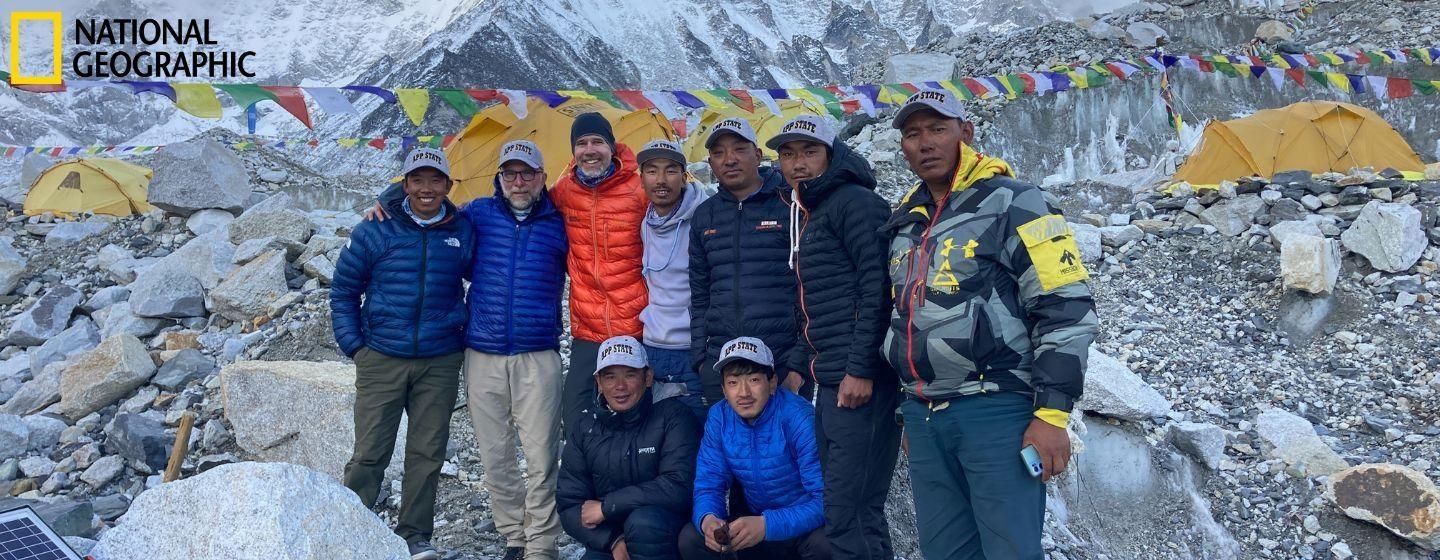Batteries Need Changing, Even on Mount Everest


Here’s a fun exercise.
Type into your web browser or ask your smart speaker, “what’s the weather on Mount Everest?”
I just did, and as I’m writing this it’s 11 degrees Fahrenheit with a windchill of 4. It’s safe to say we take technology for granted.
And it turns out, that information is provided by weather stations on Mount Everest run by researchers at Appalachian State University (ASU).
There are file weather stations on Mount Everest, the world’s highest mountain, located between Nepal and Tibet. The weather stations range in elevation from 12,500 feet at Phortse to 28,904 feet at Bishop Rock, the world’s highest weather station. Mount Everest’s summit tops out at 29,032 feet.
Dr. Baker Perry, National Geographic Explorer and a professor in ASU’s department of geography and planning, and Dr. Brian Raichle, a professor in its department of sustainable technology and built environment, traveled to the mountain with a Sherpa team to change the batteries at all five weather stations and fine-tune instruments.
“It’s a very harsh environment for batteries,” Raichle told ASU’s news service. “The team had been using lead acid batteries, which is a common technology, but they just don’t hold up as well in lower temperatures. We were able to find new lithium-ion battery technology that has reported superior performance in these conditions.”
To make sure, Raichle used facilities on ASU’s campus to test the batteries down to a low of negative 58 degrees Fahrenheit (58 degrees below zero).
“The [batteries] performed quite well in the test, so we’re confident they will perform well on the mountain too,” Raichle added.
The battery-changing expedition in 2023 built upon the 2019 and 2022 National Geographic and Rolex Perpetual Planet Everest Expeditions. It was made possible by the National Geographic Society and Rolex’s Perpetual Planet Initiative, in collaboration with a group of elite climbing Sherpas.
Sherpas are members of a Tibetan people living on the high southern slopes of the Himalayas in eastern Nepal. They are known for providing support to mountain climbers.
“We have a really strong team, especially the Sherpas, but we’ve been missing the skill set that Brian [Raichle] has to offer,” said Perry. “It was terrific to have him in the mix and have his expertise … We’re hopeful that, with these updates, the higher stations … will be able to make it through the winter. It will be fantastic if we can get a complete year of data.”
Besides the novelty of checking the weather on the world’s highest mountain, why are the weather stations important?
The weather on Mount Everest affects the rest of the world because it reaches into the sub-tropical jet stream, a band of powerful winds that circle the globe at high altitudes and are difficult to track.
The weather data from the stations include real-time wind, temperature and precipitation measures, which provide some insights into the jet stream.
In addition, mountain glacier systems are decreasing in volume worldwide because of climate change and not much is known about those systems above 16,000 feet. The stations will help with that understanding.
Locally, real-time data from the stations is improving climber safety on the main routes to the top of the mountain.
“The climbing community uses the data on the mountain to make better decisions based on weather conditions,” said Perry. “For the scientific community, those of us who study climate-glacier interactions and climate change in the Himalayas use the data quite a bit and its effects on glaciers, the information is important … If we can continue to extend the record, it becomes even more valuable.”